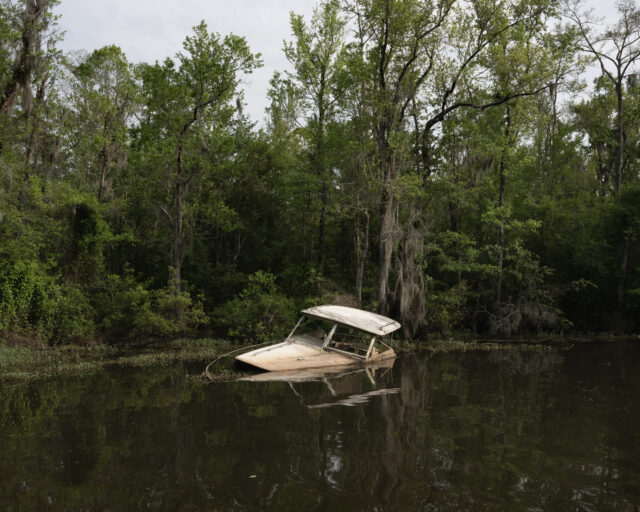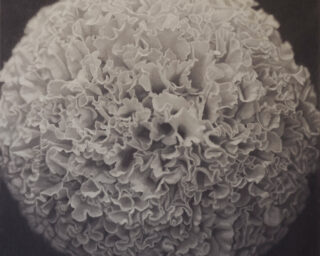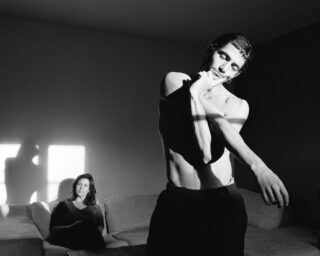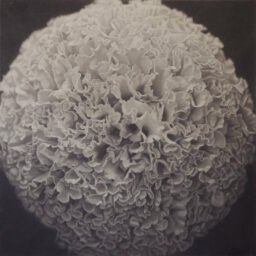Tommy Kha Isn’t Kissing You Back
The Memphis-born photographer navigates performative intimacy, the legacy of the Mississippi Delta Chinese, and the pitfalls of visual language for queer Asian men.
Tommy Kha, Kati, (Return to Sender), 2013
There is power and vulnerability in a kiss, and perhaps even more so, in the way a kiss is represented. When Tommy Kha photographs himself being kissed by strangers, lovers, and friends, the stakes are high, especially as a queer Asian man. We don’t often get to see bodies like his getting kissed—not in the movies, on TV, or on gallery walls. I met Tommy two years ago, through a conversation for Aperture about Asian American photographers. This time, I spoke with Kha on the eve of his solo exhibition in New York, Return to Sender, about Asians in the American South, the violence of portraiture, and the visual ancestors he works toward—and against.

Courtesy LMAKgallery, New York
Will Matsuda: What is it like to be in a room filled with pictures of people kissing you?
Tommy Kha: It’s very out-of-body to have the space to present this long-form project. Some of the photographs have been converted into slide film, and then projected on an old-school Kodak slideshow carousel. I love the noise. It’s a different feeling than seeing them printed out.
Matsuda: Could you tell me about your deadpan gaze in the photographs?
Kha: While I see the kissing pictures as a performance, the kiss is a very real gesture. It’s all an act, but I’m interested in how, unconsciously, reality intrudes.
The kissers choose how they appear on camera, how they kiss me. There are a few little directions, like how to tilt their head so that the light would be better. It’s their secondary gestures that reveal something—their hands on my face, or neck, or physically picking me up.

Courtesy LMAKgallery, New York
Matsuda: How has the work been received?
Kha: Initially, when the work was circulated online in 2013, there was a backlash. Asian people accused me of perpetuating Asian American stereotypes. Our representations are often neutered in Hollywood, presented as asexual, or rendered flat and as background characters. There was an animosity toward the photographs because of my deadpan face. I tried to explain that it was an expression of my power—I could inhabit that space and make a caricature of it.
Recently, the conversation about the work shifted toward a conversation about consent. It’s interesting how this work can be a part of a very important, and different, conversation than when it first circulated.
Matsuda: About consent specifically? I’d like to hear more about that.
Kha: My friends showed the work to their students, and it triggered a few students, because it appeared that I was being taken advantage of, because of my emotionally unavailable look.
But I want to be clear that I’m not telling anyone they are misreading the images, to not reduce their experiences. There is permission, though. The subjects have to kiss me; I am not kissing them back. I always explain the project and its parameters, and then the permission has been granted. In order for these pictures to happen, a “yes” has to happen.
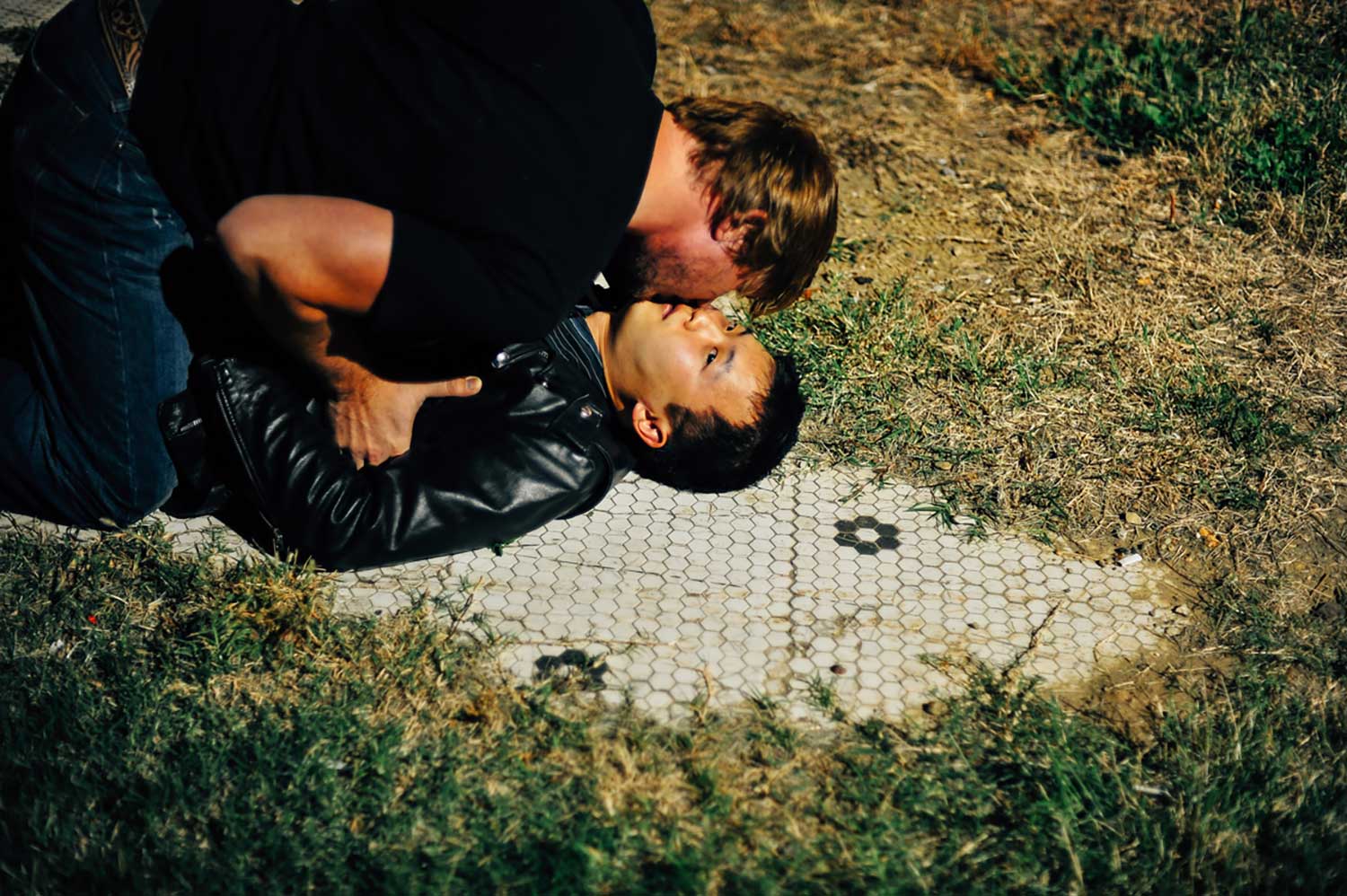
Courtesy LMAKgallery, New York
Matsuda: I’m interested in the way you think about power. I want to be intersectional about this, but as Asian men, we are rarely portrayed as powerful or sexy. So, I’m curious about the ways you often appear as a passive actor, or diminutive, in your images. At the same time, you have agency, because you are the person constructing the image. There’s this interesting tension. What’s at stake for you?
Kha: I think it comes out of growing up in the South within a foreign body. I don’t see enough work that elaborates on the intersections of being queer, Asian, and Southern.
I think the tension arises from having to decode across my identities—I try to avoid using the word “identity,” because it’s a regular cast member in art speak—and the lack of photographic language that can fulfill those totalities. It’s hard to hit all those notes in every photograph. I’ve resigned to compartmentalizing and working in different iterations and approaches.
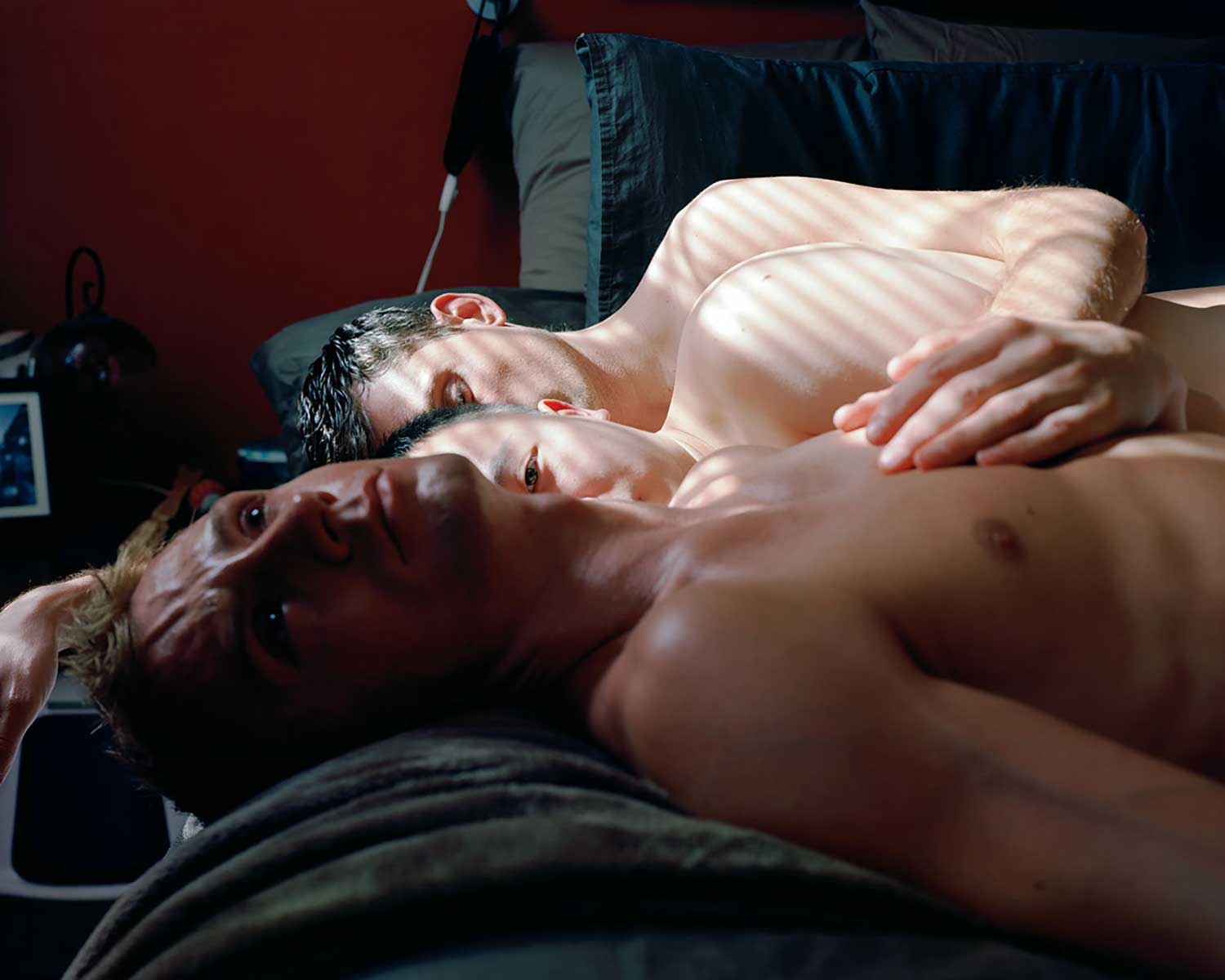
Courtesy LMAKgallery, New York
Matsuda: It’s about being seen.
Kha: Yes, more specifically it’s a desire to be seen. In one of the photographs we picked for the exhibition, I am sandwiched between two men who look like Ken dolls on a bed. But you can only see a sliver of me.
The way I stage my photographs confuses people. People ask me how much of it is staged or if part of it is staged. Is the picture real? And that’s part of the question I am asking myself—how does one arrive to their own representation? I am searching for that answer from both sides of the camera. How do I arrive at myself?
Matsuda: I was in a class with Justine Kurland this summer, and she mentioned the idea that a portrait is an act of violence. As someone who does a lot of self-portraiture, do you ever think of it as an act of violence against yourself?
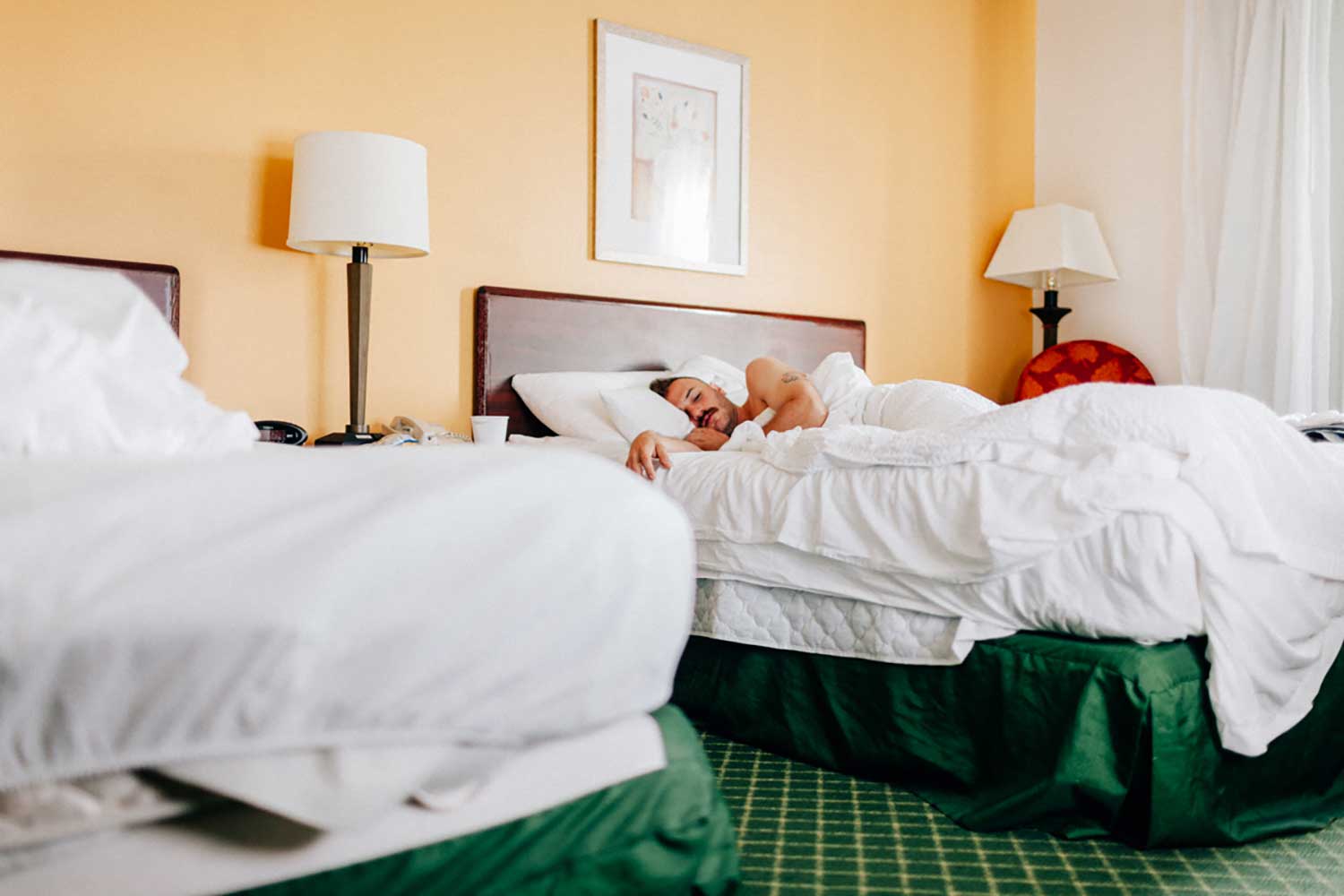
Courtesy LMAKgallery, New York
Kha: Right, Sontag wrote about this. She called a portrait a “soft murder.”
Matsuda: Which is the title of your new book. So obviously, you have been thinking about this.
Kha: Yes, oh, I love talking about Sontag, but only when I bring it up [laughs].
I think of depictions of Anna May Wong in Hollywood cinema, or these reenactments of building the Transcontinental Railroad, restaging them with Asian and women’s bodies. Historically, these bodies were almost never imaged—most notably [left out of] the 1869 group portrait made at the hammering of the “golden spike.”
Soft Murders is the culmination of a family album, sourcing familial imagery alongside my collaboration with my mother, as well as a photocopy news article detailing my aunt’s murder.
Sontag said to photograph someone was to violate them, because the camera/photographer could telegraph information about them. What does it mean when the photographer is the perpetrator, and what information can I glean from people who share my DNA? And in picturing these self-portraits, who owns my photographic shadow, and how much of that is influenced by the past’s visual ancestors?

Courtesy LMAKgallery, New York
Matsuda: Since the last time we spoke, it seems like you’ve been spending more time in the South.
Kha: I have found myself down there a lot. Having only a finite amount of time, there is this urgency about photographing the South—it’s a rediscovery. I don’t know if it’s the Old South that everyone romanticizes, like William Faulkner or Flannery O’Connor.
Matsuda: It’s interesting to hear you say that, because as an Oregonian, my connotations of the Old South are pretty negative. Given your identities, what do you want to preserve?
Kha: Did I tell you I came across a whole community of Mississippi Delta Chinese that have been living there since the 1920s?
Matsuda: Yes! And that seems urgent.

Courtesy LMAKgallery, New York
Kha: Yeah, so I go down for that. I’m also trying to photograph families who had relatives who died during the AIDS crisis in the 1980s and ’90s. Those stories are pretty hidden in the South still. Even talking to people now, there is a sense of protection, privacy, and shame. There’s a woman in Arkansas who buried a lot of people who died in her family’s cemetery.
And circling back to the Mississippi Delta Chinese, I wish I knew about them when I was a kid. I would’ve felt like there were people who looked and sounded like me. The issue that I’m having now is that this community is getting older or moving away. The South that they and I have experienced is important, and disappearing.
Back then, they also had to start their own schools because they were subjugated to segregation laws. They couldn’t go to Black or white schools—they had to start their own. A lot of them had grocery stores that catered to both Black and Chinese communities, and they’ve been giving me tours of those stores, or the traces of what’s left of them.
Matsuda: I wonder if there was any hybrid Mississippi Delta Chinese food that came out of those communities?
Kha: Yeah, there actually was a food documentary about this community, and that’s how I found out about them. They spoke about trying to re-create their family’s recipes with the ingredients available to them in the Delta. They did cookouts and things too. I’m hoping to go to one of their cookouts the next time I’m down there.

Courtesy LMAKgallery, New York
Matsuda: You have to do that! You mentioned that part of the reason you are going down more is because of your family. And last time we spoke, you mentioned how your family hasn’t always approved of your career as a photographer. But your mom is in a lot of the photographs, and even is holding the cable release in a few. Has that relationship changed as a result of your photographs?
Kha: I think photography has helped a little bit. My family is less skeptical. Now they just refuse to be photographed by me. They never really see the photographs. But I’ve been collecting them into a more palpable family album to give them soon. My mom used to be an unwilling sitter, but she has become a great collaborator. Last Monday, we made pictures together and I was introduced to her face masks, which were Japanese Kabuki-inspired. We made a very ambiguous Asian picture.
Matsuda: But if your mom is making time for these sessions, at least on occasion, it seems like she is down to make pictures!
Kha: Yeah, that’s true. My grandma still refuses. She once said, “Please don’t take my picture, but if you do, this is my good side.”
Return to Sender is on view at LMAKgallery, New York, through October 20, 2019.












